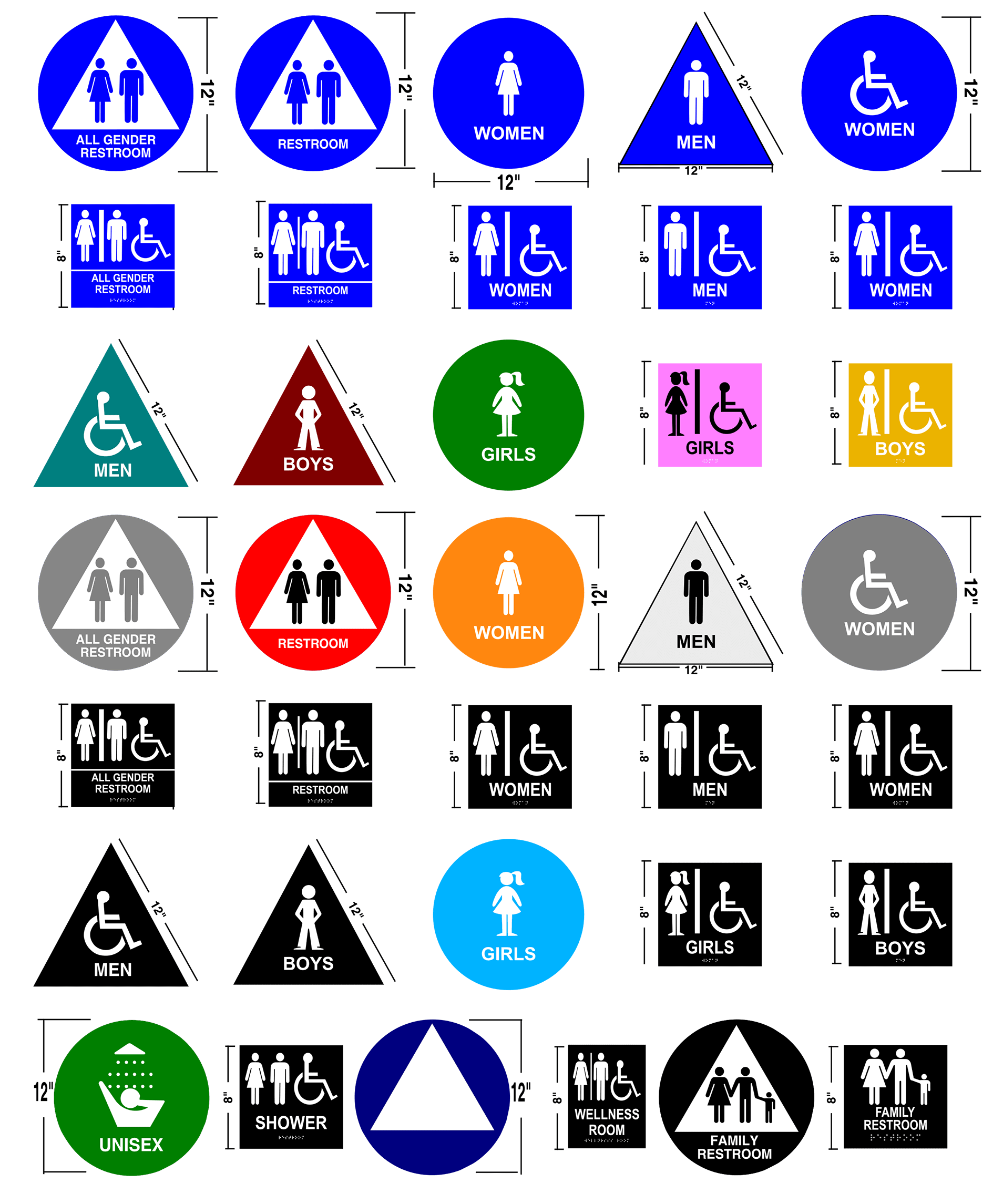Exploring the Trick Attributes of ADA Indicators for Boosted Ease Of Access
In the world of accessibility, ADA signs act as silent yet powerful allies, making sure that rooms are comprehensive and navigable for people with impairments. By incorporating Braille and responsive elements, these signs damage obstacles for the visually impaired, while high-contrast shade systems and clear font styles deal with varied aesthetic requirements. Furthermore, their calculated positioning is not arbitrary but instead a computed initiative to facilitate seamless navigating. Yet, past these features exists a deeper story concerning the evolution of inclusivity and the continuous dedication to creating fair spaces. What more could these signs indicate in our pursuit of universal accessibility?
Relevance of ADA Compliance
Making sure compliance with the Americans with Disabilities Act (ADA) is essential for promoting inclusivity and equal access in public spaces and work environments. The ADA, enacted in 1990, mandates that all public centers, employers, and transport solutions suit individuals with disabilities, ensuring they enjoy the exact same civil liberties and chances as others. Compliance with ADA standards not just satisfies lawful responsibilities yet additionally boosts a company's online reputation by demonstrating its commitment to diversity and inclusivity.
Among the crucial elements of ADA compliance is the application of obtainable signs. ADA indications are made to guarantee that individuals with impairments can quickly navigate via structures and areas. These indicators should comply with details standards pertaining to dimension, typeface, shade contrast, and placement to assure exposure and readability for all. Effectively implemented ADA signs assists eliminate obstacles that people with handicaps frequently encounter, therefore promoting their freedom and confidence (ADA Signs).
In addition, adhering to ADA guidelines can alleviate the risk of lawful repercussions and possible fines. Organizations that stop working to follow ADA standards might face fines or lawsuits, which can be both damaging and economically difficult to their public photo. Thus, ADA compliance is essential to promoting an equitable environment for everyone.
Braille and Tactile Components
The unification of Braille and tactile components right into ADA signage personifies the principles of availability and inclusivity. These features are crucial for individuals who are aesthetically damaged or blind, allowing them to navigate public spaces with better freedom and confidence. Braille, a responsive writing system, is necessary in supplying composed information in a style that can be easily perceived via touch. It is commonly positioned under the corresponding message on signs to make certain that individuals can access the info without aesthetic support.
Responsive elements prolong past Braille and include raised characters and signs. These components are designed to be discernible by touch, allowing people to recognize room numbers, washrooms, departures, and other critical areas. The ADA establishes particular guidelines regarding the size, spacing, and positioning of these responsive components to optimize readability and make sure uniformity throughout various settings.

High-Contrast Color Design
High-contrast color design play a critical function in boosting the visibility and readability of ADA signs useful reference for individuals with visual disabilities. These plans are essential as they take full advantage of the difference in light reflectance between message and background, making sure that indications are quickly discernible, also from a range. The Americans with Disabilities Act (ADA) mandates using specific color contrasts to accommodate those with restricted vision, making it a crucial element of conformity.
The efficiency of high-contrast colors depends on their capacity to stand out in different lighting conditions, including poorly lit environments and locations with glare. Normally, dark text on a light background or light message on a dark background is employed to accomplish optimal comparison. For instance, black text on a white or yellow history offers a stark aesthetic difference that helps in fast acknowledgment and comprehension.

Legible Fonts and Text Size
When considering the design of ADA signs, the option of clear fonts and proper text dimension can not be overemphasized. These elements are crucial for making certain that indicators come to people with aesthetic problems. The Americans with Disabilities Act (ADA) mandates that typefaces have to be not italic and sans-serif, oblique, script, extremely attractive, or of unusual form. These demands aid guarantee that the text is easily understandable from a range which the personalities are distinct to diverse audiences.
The dimension of the message also plays a critical role in availability. According to ADA standards, the minimum message height ought to be 5/8 inch, and it ought to boost proportionally with seeing range. This is especially crucial in public rooms where signage requirements to be reviewed promptly and properly. Consistency in message dimension contributes to a natural aesthetic experience, aiding individuals in navigating environments successfully.
Moreover, spacing between letters and lines is important to clarity. Sufficient spacing stops characters from showing up crowded, boosting readability. By sticking to these standards, developers can considerably improve access, ensuring that signage serves its designated function for all individuals, no matter their aesthetic capacities.
Effective Positioning Techniques
Strategic placement of ADA signage is necessary for maximizing access and making certain conformity with legal criteria. ADA standards stipulate that indications ought to be installed at a height between 48 to 60 inches from the ground to ensure they are within the line of view for both standing and seated individuals.
In addition, indicators need to be put beside the latch side of doors to allow very easy recognition More Bonuses before entry. This placement helps individuals locate spaces and areas without obstruction. In instances where there is no door, signs must be positioned on the closest adjacent wall. Consistency in indication positioning throughout a center boosts predictability, minimizing complication and enhancing general user experience.

Final Thought
ADA indicators play a crucial function in promoting availability by integrating functions that address the requirements of individuals with disabilities. These aspects jointly promote a comprehensive atmosphere, highlighting the relevance of ADA conformity in making certain equal access for all.
In the world of ease of access, ADA indications serve as silent yet effective allies, making certain that areas are inclusive and navigable for people with handicaps. The ADA, enacted in 1990, mandates that all public centers, companies, and transportation solutions suit individuals with disabilities, guaranteeing they appreciate the exact same legal rights and possibilities as others. ADA Signs. ADA indications are developed to ensure that people with impairments can conveniently navigate through structures and areas. ADA guidelines state that indicators ought to be placed at an elevation in between 48 to 60 inches from the ground to guarantee they are within the line of sight for both standing and seated people.ADA indicators play an essential role in advertising accessibility by incorporating functions that address the requirements of people with disabilities